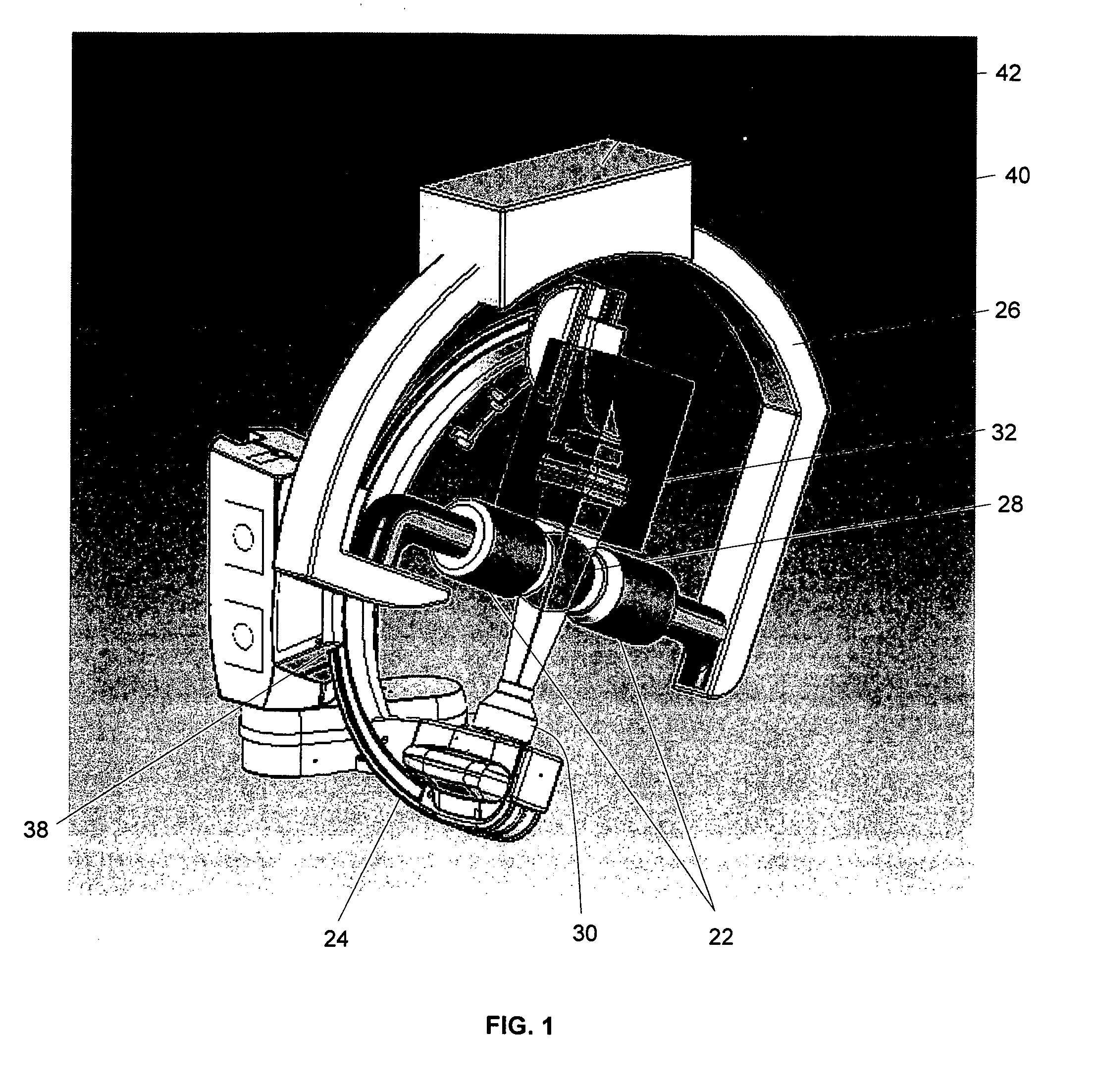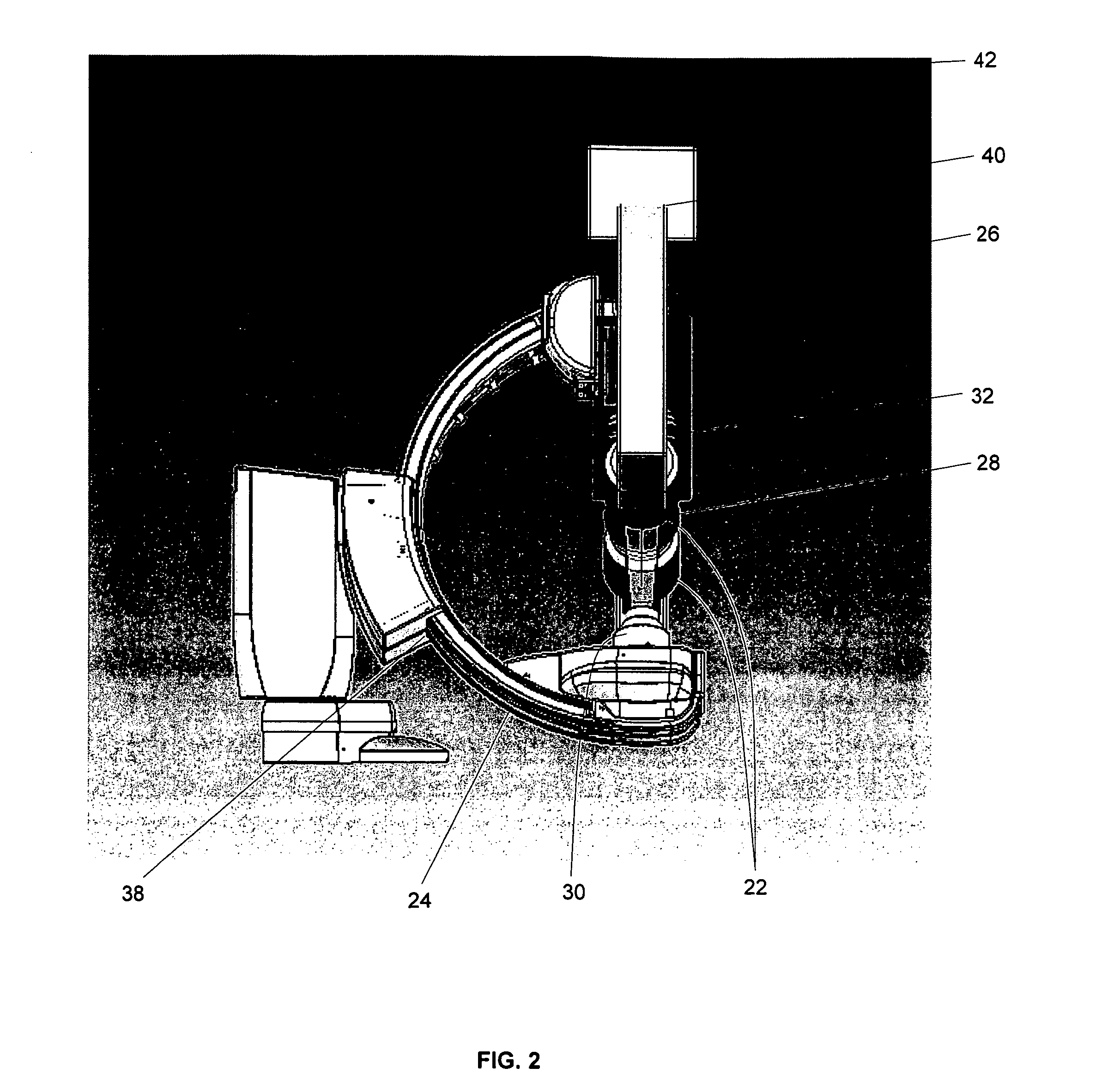Magnetic navigation and imaging system
a navigation and imaging system technology, applied in the field of magnetic surgery system, can solve the problems of less accessibility of the operating region of the patient, difficult and time-consuming for the physician, and the only surgeon with the most skilled skills, so as to improve flexibility and accessibility.
- Summary
- Abstract
- Description
- Claims
- Application Information
AI Technical Summary
Benefits of technology
Problems solved by technology
Method used
Image
Examples
first embodiment
[0031] In one first embodiment of the present invention, a system that enables both imaging and magnetic navigation within an operating region of a subject's body is provided. The system comprises magnetic navigational equipment 22 that provides navigation control in an operating region 28 of a subject's body, as well as imaging equipment for procedures where anatomical views of the patient may be required during the procedure. The system generally comprises a first imaging equipment support structure having a generally C-shaped configuration 24, and a second equipment support structure having a generally C-shaped configuration 26. The first and second C-arm structures are preferably mounted on tracks that enable the C-arms to rotate circumferentially about an operating region 28 of the subject's body as shown in FIG. 1.
[0032] In the first embodiment, the system comprises a first C-arm 24 with an imaging beam source 30 and an imaging beam receiver 32 that are mounted on the first C-...
second embodiment
[0035] Referring to FIGS. 3-11, a system is provided that enables both primary and secondary imaging as well as magnetic navigational control within a subject's body. The system comprises magnetic navigational equipment 22 that may be moved from a first navigational position to a second position for enabling secondary imaging equipment to have access to the operating region of the subject's body, for example, during a procedure where additional views of the patient are required for the procedure. The system generally comprises a first imaging equipment support structure 24 having a generally C-shaped configuration, and a second imaging equipment support structure 26 having a generally C-shaped configuration. The first and second C-arm structures 24 and 26 are preferably mounted on tracks 38 and 40 that enable the first and second C-arms 24 and 26 to rotate in a generally circumferential arc about an operating region 28 of the subject's body as shown in FIG. 3.
[0036] In the second em...
third embodiment
[0045] The third embodiment further comprises a second C-arm 26 that is mounted on a track support 40 for enabling the second C-arm to rotate about the radial center of the second C-arm 24. The second C-arm 24 rotates in a generally circumferential arc about the operating region 28. The track support 40 is preferably mounted via a motorized trolley or travel mechanism to an overhead linear track 42 that is parallel to the longitudinal axis of the patient and / or support table 44. The overhead linear track 42 enables the second C-arm 26 to be moved to a secondary imaging position, such that a line between the imaging beam source 30 and receive 32 on the first C-arm 24 is generally perpendicular to, and coplanar with a line between the imaging beam source 34 and imaging beam receiver 36 on the second C-arm 26. The second C-arm 26 shown in FIG. 12 is preferably an overhead secondary Siemens C-arm, but may alternatively be any equivalent system capable of rotation about an operating regi...
PUM
 Login to View More
Login to View More Abstract
Description
Claims
Application Information
 Login to View More
Login to View More - R&D
- Intellectual Property
- Life Sciences
- Materials
- Tech Scout
- Unparalleled Data Quality
- Higher Quality Content
- 60% Fewer Hallucinations
Browse by: Latest US Patents, China's latest patents, Technical Efficacy Thesaurus, Application Domain, Technology Topic, Popular Technical Reports.
© 2025 PatSnap. All rights reserved.Legal|Privacy policy|Modern Slavery Act Transparency Statement|Sitemap|About US| Contact US: help@patsnap.com



